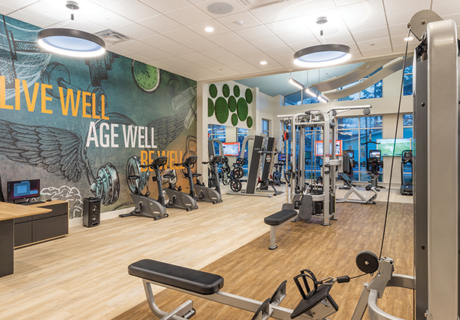2022 EFA Conference Review: Design Ideas For The Next Generation Of Senior Living
The next generation of seniors is looking for something different. That was the message from speakers Craig Witz, principal at Witz Company, and Vassar Byrd, CEO at Rose Villa and president of Leading Age Oregon, during the session “Rethinking Senior Living Design for the Next Generation,” at the 2022 EFA Conference + Expo, April 2-5 in Milwaukee.
“The [baby] boomers have very different influences, relationships, values, and thoughts about retirement than the silent generation,” Witz said. “They don’t want to live their lives the way their parents did, including in retirement. They don’t want to be defined by their age or isolated because of it.”
Instead, they’re looking for communities that provide support when they want it, deeper connections to others, a sense of meaning and purpose, and the opportunity to be part of an organic mix of ages.
Additionally, the speakers noted, today’s seniors are looking for partnerships in both their living environments and, when needed, their care. “They’re used to—and very comfortable with—running the show and making good decisions for themselves and their own businesses,” Byrd said. “They will not cede that to ‘industry professionals.’ And if they can’t find all of that, continual advances in technology and service delivery will allow them to stay home much longer than previously.”
To help guide project teams in creating senior living communities that cater to the next generation of older adults, the speakers offered seven guiding principles:
- Connected not apart. Picking a site with a good walk score, transit score, and bike score ensures there are—or will be in the future—good connections to activities for residents, Witz said. “Not the standalone remote suburban site,” he added. Instead, think urban environments, college campuses, neotraditional neighborhoods, and walkable residential neighborhoods or communities that have multiuse amenities adjacent to their current campus to provide those connections.
- Up, not back. When site planning, it’s important to think about bringing the community up to the street to create walkable and organic connections to the local neighborhood. One example is the Rose Villa campus in Portland, Ore. “The building comes up to the front lot line, creating a defined ‘urban edge’ and encouraging walkable connections in and out of the community,” Byrd said.
- Mixed use, not single purpose. To make a positive first impression, the speakers encouraged attendees to think about forgoing traditional senior living design “markers,” such as a large porte cochère and a grand entrance or a hub-and-spoke design setback behind a large parking lot, in favor of a style that more resembles mixed-use and non-age segregated apartments. “If you’re not regularly hearing ‘I had no idea this building/campus was senior housing,’ you are doing something wrong,” Byrd said.
- Out, not in. When it comes to the placement and orientation of the community commons, the design should be open and inviting to both residents and visitors/non-residents to encourage intergenerational connections on campus. At Rose Villa, for example, all of the common areas are outward-facing with storefront glass and branded signs. “It looks and feels like a fun, lively retail environment,” Byrd said.
- Intergenerational, not age segregated. Amenity spaces and operational programming should encourage and create intergenerational connections. Ideas include a coffee shop or bistro open to the public, an on-site preschool, or a community auditorium or multipurpose space that’s available for resident events as well as rehearsal space for local theater groups, neighborhood meetings, and community holiday events, Witz said.
- Varied and blurred, not generic and separate. Just as the campus from the outside shouldn’t look like “senior living,” the speakers said that supportive living buildings—assisted living, memory care, skilled nursing—shouldn’t look like “healthcare.” Byrd said this entails incorporating residential design approaches to the outside and inside of these spaces to avoid the often “bright-line” separation between independent living and healthcare areas.
- Creating a sense of place. “Throughout my career I’ve probably visited at least 1,000 senior living communities,” Witz said. “The ones that stand out to prospects (and to me) are the ones that purposefully integrate placemaking: telling a story, incorporating history, purposefully using symbolism or myth or archetype, to connect residents with each other and the community.” Design strategies include theming that ties in to local history and visually telling the story of the community’s history or values.
In conclusion, the speakers noted that the principles will not only help create housing environments that better serve this next generation but can also create a great positive marketing differentiator for a community. “Their desire for intergenerational experiences and opportunities for personal growth and integration into the larger community will drive their choice of where to live,” Byrd said.

